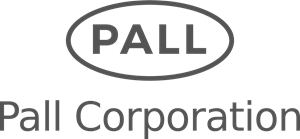The purpose of every IoT solution is to provide value.
And that value needs to outweigh the costs.
As a product owner, your first step is to build a solid business case. Knowing your business case lets you know the value of the solution. (This is itself not that easy - we discuss this in more detail below.)
But how do you estimate the costs?
Let’s break the costs into three categories:
- Development costs
- Production costs
- Operational costs
Development costs are the upfront costs for developing the solution. This is mostly development fees for custom hardware and software.
We recently launched our IoT solution planner to help estimating development costs for your IoT solution.
Production costs are the per-unit cost of producing each IoT device. This includes hardware costs, software costs, and factory costs.
Operating costs are the ongoing costs for running the IoT solution. This includes cloud hosting and software licenses.
Let’s look at each of these.
Development costs
Every IoT solution is different.
But all IoT solutions are similar in one way: they need custom software and hardware.
And that software and hardware needs to be developed. This will incur development costs.
The development costs will depend on the amount of customization needed.
In general, software is easier (less costly) to develop. But the amount of software is higher, so software development costs will outweigh hardware development costs.
Custom software is needed in several places:
- Embedded software (firmware) customization to accommodate custom hardware
- Custom smartphone app software
- Custom frontends (smartphone and web applications)
- Custom backend business logic
- Software for integration with custom backend software
- Production testing software
Because of the amount of custom software needed, plan to spend at least $100000 USD on development costs.
Thingsquare has a cost estimate feature in our IoT solution planner that can help you get an initial estimate of your software development costs.
Production costs
Production costs happen after the solution has been developed and it is time to produce the hardware.
Production costs can be broken into:
- Bill of Materials (BOM): the cost of each individual chip on your hardware board
- Manufacturing costs: the cost to produce each hardware device
- Manufacturing testing costs: the cost to test the components and the devices on the production line
Makezine has a good breakdown of these steps, and more.
Operating costs
Your IoT solution needs software and servers to run. Those servers will incur operating costs.
Today we live in the age of the cloud. So renting computing power is easy.
With the cloud, you can start small and easily scale up once your needs increase.
But it is not always easy to get a grasp of how much these fees will amount to.
It is often easy to find the (low) price for one hour of computing time. But it is difficult to understand how many hours are needed.
Ian Skerrett has a nice run-down of a variety of IoT cloud platforms and what their fees reasonably might amount to.
In general, prepare to start at around $1000 USD per month for any reasonable backend service.
How to be cost-efficient
Cost efficiency is not about taking the cheap route.
It is about knowing what you need to produce, and then do that well.
The risk with going cheap is that you end up with a failed project. Nobody wants that.
The trick is to focus on the truly important aspects of your solution, and keep that focus throughout the project:
- Does my solution solve a valuable enough problem?
- Are there enough people with this problem for my solution to be viable?
The way to do this is a four step process:
- Develop about your business case (that is - answer the question: whose problem am I solving, and what do they pay to solve this problem today?)
- Build a prototype solution
- Does my prototype solve the problem in Step 1?
- Iterate back to Step 1.
These steps are difficult. You need to be prepared to fail. Your first iterations won’t solve your problem.
But failing at this stage is not bad, because this is a learning phase. It allows you to go one more iteration. And each iteration brings you closer to your goal.
It will eventually get you to the point where you’ll know what to build. And once you know what to build, you’ll have an idea of the value of your solution.
And when you know the value, it is really simple:
- Value > Cost
Your value should exceed your cost. Its just that easy.
Conclusions
The purpose of any IoT solution is to create value. And create more value than the cost of producing the value.
As a product owner, you need to know both the value of your solution and the cost of getting there.
We can break down the costs into development costs, production costs, and operating costs. We recently launched our IoT solution planner, which will help you get an estimate of the development costs.
And always feel free to get in touch with us to discuss your IoT solution!
 By Adam Dunkels, Thingsquare CEO
By Adam Dunkels, Thingsquare CEO








